Ogun Unal | How Oxidation Weakens Aluminum, and Why Engineers Make the World Better
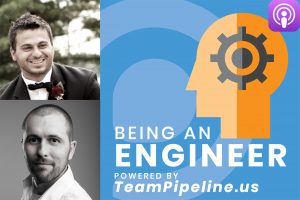
Who is Ogun Unal?
Ogun Unal‘s expertise is in industrial engineering and metallurgy. He describes how the oxidized top layer of molten Aluminum can be pushed sub-surface and lead to failures in the cast components engineers do not handle properly. Ogun Unal also shares an interesting take on how engineers spark change in the world. Additionally, We talk about what life might be like without engineers’ inventions.
EXPAND TO VIEW EPISODE TRANSCRIPTION
SUMMARY KEYWORDS
engineer, sheet metal, people, molten metal, engineers, aluminum, sheet metal parts, metal, work, application, design, designing, learn, reduce, casting, manufacturing, project, speak, add, automotive
SPEAKERS
Presenter, Ogun Unal, Aaron Moncur
Aaron Moncur 00:00
Hey everyone, we’re looking to add a new member to our engineering team. Ideally, we’re looking for a Senior Level Mechanical Design Engineer in the Phoenix area, who has experienced designing custom automated machines, equipment and test fixtures. Also, having working experience with controls, and system integration is a plus, if you’d like to apply or suggest Someone, please email us at info at testfixturedesign.com.
Presenter 00:31
The Being an Engineer Podcast is a repository for industry knowledge and a tool through which engineers learn about and connect with relevant companies, technologies, people resources and opportunities. Enjoy the show.
Ogun Unal 00:47
This is how you do it right? Tomorrow. That’s how you do it again, and a week, that’s how you do it. Again, if it’s pressing a button, or opening a door or a handle, whatever it is, that’s how you do it. And that’s how you will keep doing it. But someone with an engineering mindset will look at and say, I can make this better. And when I do when I’m done with it, I don’t have to sell it to you, I don’t have to convince you to use it, because you’re going to love it, you’re going to look at this option here. And that option here that I’ve just worked on, you’re gonna just you’re not going to be able to avoid it. And next thing you know, that’s going to be the new norm. That’s going to be your new habit. When you think about this task. That’s what you’re going to visualize. And that’s just, that’s what engineers do. They keep, they care about what works. And then they care about what works better.
Aaron Moncur 01:45
Hello, and welcome to another episode of the Being an Engineer Podcast. Our guest today is Ogun Unal who holds a bachelor’s degree in Metallurgical Science and Materials Engineering, and a master’s degree in Mechanical Engineering. Ogun has spent much of his career to date working with manufacturing teams, helping them improve their processes to reduce cost and optimize efficiency. Ogun, welcome to the show.
Ogun Unal 02:09
Thanks for having me.
Aaron Moncur 02:10
You bet. Super excited to talk with you today. I’m going to start off with the same question I asked everyone, which is why did you decide to become an engineer?
Ogun Unal 02:21
Well, in high school, I really didn’t know that I wanted to be an engineer first, to be honest. But then I remember that I was very interested in stories of people who see problems and, and issues that they just they just notice, sometimes on a daily basis, and then they find solutions for those and and then they just make the process better and make it easier and safer and reliable. And then all of a sudden, whatever the solution is, there’s signatures all over it. And I changed the way people do things and their habits. And that’s really inspiring to me as I wanted to do that. And then I learned that I can do that as an engineer. That’s how it started.
Aaron Moncur 03:04
Engineers can do anything, can’t they?
Ogun Unal 03:06
Anything. Yeah, anything at all.
Aaron Moncur 03:07
Do you remember any of those stories? in particular? Like, was there one or two that was particularly impactful for you?
Ogun Unal 03:14
Well, there are so many, and I don’t know which ones are actually true. They can just be stories. Yeah. I mean, I remember that reading about the stories that NASA was using power tools like core corded power tools to fix certain problems on a spacecraft. And then, and then they that was a problem dealing with all the cords and everything. And then they came up with cordless power tools. And now whatever, whichever manufacturing facility you go to, they’re everywhere. And I’m sure it wasn’t one engineer, it was a group of engineers, or I’m sure it was a long, I don’t know, like, challenging process, maybe. But now, it’s, it’s when you think about a power tool. That’s what you remember, that just changed people’s habits. And now it’s everywhere. It’s it’s just the new norm. Right. And that’s, that’s very inspiring to me. Or another example would be like, back in the day, when you think about opening a window, you would think about a like a handle that you would have to turn to open a window. Right? And if you if you talk about opening a window in a car, sorry, I forgot to say it’s in a car. Yeah. So people, that’s what we put people would remember. And then so we just did improve that process. And now if you think about the same thing, you think about a button.
Aaron Moncur 04:37
Yeah.
Ogun Unal 04:37
And now it’s much safer and reliable, faster. And if you are the engineer who worked on that, who made that possible. Now every time you see a car and people press a button to open a window, your signature is on it. You made that possible. I think that’s very inspiring. There’s so many examples everywhere for things like that.
Aaron Moncur 04:58
That’s a really cool way to think about Your Signature is on that product. I hadn’t really thought about it in that way before. I appreciate you sharing that. You earned your bachelor’s degree from Istanbul University, what what made you decide to come to the US as opposed to staying in Turkey,
Ogun Unal 05:16
I had no idea that I was going to come to the United States, actually, I was just working on like, I was trying to graduate as soon as possible. And then I remember that I was looking at different companies and different positions in different cities in Turkey. And then I had a professor who’s like a mentor for me. And I knew that he went to Norway and England to get his master’s degree PhD and postdoc, and he worked with different companies as a consultant. So I went to him one day, it’s just like, Hey, I would like to have more options. Like, I don’t know, what is the best option for me, I just want to have more options. And I want to just have them in front of me. And then just say, Okay, this is the, this is what I want to do. And that’s what I don’t want to just limit myself with one position or one company. And this is what I have to do. Because this is all I’ve got, I wanted to have more options. And he said, ‘Hey, you know what, you are interested in this particular field? Are you what you study on this, I know that you like this. So you might want to look into this university in Norway, in Italy, in England,’ and I started sending emails, and he wrote some other professors as well, they wrote recommendation letters for me. And then they, they sent those recommendation letters to particular professors and in different countries. And we received really positive feedback from them, but and then after that, we heard back from University of North Florida, and there was a professor there and very well known, very respected and numerous papers like every year. So once we heard that he was looking for a research assistant, I just thought, well, this is great. This is what I want to do. And that happened about like three months before I was on a plane to you.
Aaron Moncur 07:00
Yeah, very cool. Now, you must have been speaking English in Istanbul because your English is perfect. Oh, thank
Ogun Unal 07:07
you. That that was that started in high school, I graduated from sort of Anatolian High School. And they was education with foreign language education was great. And also I wanted to just practice more and improve my, I wanted to be able to speak fluently. So in college, I translated movies, and shows for people with hearing disabilities, I’m sure you watch some, like movies with subtitles, and they even like put, ‘Oh, hey, yay.’ Different things like just for people who can’t hear. And some people just like having subtitles, even if they can hear but this was for people with hearing disabilities. And that’s, that’s I watched a lot of shows from all kinds of different countries, and just to translate it and write subtitles for it, that changed my accent every year.
Aaron Moncur 08:02
So how interesting that a huge help, I mean, watching shows, right? Like, that’s not textbook English, that’s real people English.
Ogun Unal 08:13
Absolutely, yeah. One. Like, for two, three months, I would translate a movie from Ireland. And the next thing you know, I’m translating something from Italy, and an American show. And then and then just, I don’t know, a French movie, maybe. But it just, they would have the English subtitles, and then, and then you would translate it or if they speak in English, you translate that just like an A, you learn like that. Okay, oh, this is how they say it. This is how they pronounce that. So and that’s how you remember it. But actually, that’s a particular accent. And then you learn something from a different show, they speak with a different accent there. And when you just speak normal with somebody and it just normal conversation, all of a sudden, it’s just a combination of different accents. And the people are like, Where are you from? Yeah, that was very challenging for me. I had to convince that I’ve never been to those countries.
Aaron Moncur 09:05
How many languages do you speak? Beginning beginner level, German, English and Turkish. That’s okay. That’s great. Well, what a great idea to translate the movies. Yeah. Okay. I was curious. So you’ve, you’re in metallurgy, and industrial engineering. And I wondered, have you heard about this this large this mass? I think they call it their Giga cast that Tesla has recently developed for the model y. I read the news. Yeah, yeah, I heard about it. They’ve I guess consolidated, something like 70, sheet metal and other components into one single, like unibody. It’s not the entire frame of the car, but it’s a large portion of the frame of the car think it’s the underside on the rear of the model. Why? I was curious to hear your thoughts about that. Like that must be a huge technological challenge to overcome. What kind of challenges do you think they may have had? Do you know anything about how they solved it? You mean this sheet consolidating sheet metal applications in one building? Well, it’s a cast part, my understanding, they, this portion of the frame of the car was made up of dozens and dozens of sheet metal and maybe some other molded or maybe some machined components, right. And they’re all put together in this one large sub assembly for the vehicle, and they consolidated all of them into one single cast unibody component, and why just thought to myself that has to be like a huge technical challenge to overcome to cast something that large.
Ogun Unal 10:45
Yeah, I think I cast casting metal, like metal metal casting is just challenged by itself. I mean, I know that you want to use just lighter, but also durable material for especially for cars. And I know that they use sand casting for old engine blocks, if I if I’m not mistaken. And there, but that must be a big challenge. Yeah, because aluminum, you just it corrodes and then sets you oxidizes, and then they it’s just a very challenging process to clean that. So that’s why I’m sure that there’s just finding the right material and handling that material before they just before it’s sold defines. I think that that must be an interesting challenge. I know that it’s been a problem. For decades. Yeah.
Aaron Moncur 11:37
Like, I’d love to take a tour of their factory and see this thing in action. It’s it’s a gigantic machine. I’ve seen pictures online and things like that. Anyway, you’ve you’ve worked on improving the quality of sheet metal parts. Yeah, in your career to date. And I sometimes wonder if sheet metal components are underutilized in in product design? Of course, they’re used extensively in automotive in some other commercial applications, but you don’t see it very often in in like, consumer product designer or general product design. And I wonder if is that just because sheet metal generally doesn’t have as appealing? Or as cosmetic and appearance as, for example, an injection molded plastic part? Or is it that design engineers in general are just not not very well trained? on how to design for sheet metal? Do you have any, any thoughts or opinions on that?
Ogun Unal 12:38
Yeah, so I think designing a part like, if it’s not a sheet metal part designing just blog, I think it’s easier for inch design engineers, but when you when you design it for sheet metal, now you have to think about bending it and then you have to think about where to weld it. And just so many different details, like tolerancing, so many different details come into play. And but it’s, uh, I mean, you can make, you can make it a very efficient process, right, and just a lot of manufacturing facilities work with sheet metal, and, but you can have a design engineer, who knows how to design really well. But if he doesn’t know, the process, then this is that connection, I think is crucial. If that person needs to understand how the machine works and then what processes what other steps that follows until it gets to the finished phase. And I think I think that’s why it’s not just a design engineer here designs it, and the people on the floor, just they just run it on the machine. And that that bridge between them is crucial. I think once that problem is solved, you can accomplish whatever you want to accomplish with sheet metal.
Aaron Moncur 13:48
What what best practices or rules of thumb, can you share with us that might be useful to design engineers for designing specifically in sheet metal parts?
Ogun Unal 13:59
I think tolerancing is very important. I think that’s that’s, like, I know that there are methods that people know, like, and they’ve been using it for for a long time now like GD and T. And and I know that just just understanding how the, just you need to understand how your the software you’re using works with sheet metal parts. I know that when they start use SolidWorks as you’re learning a sheet metal side of it is also very important. And it’s important to make it doable. Like I mean, a lot of things can look very good on the paper. But is it also machinable? Is it also just easy process for the people on the shop floor. And you need to understand the challenges for them too. And I think that’s the important part. And these things, I think if as long as you have a checklist, just not just thinking about Okay, I designed it, it looks good. Here’s my drawing. Just send it as their job. Now, not I don’t believe that’s true. That’s still your job to make their jobs easier.
Aaron Moncur 15:05
What? What are some of the granular details, like you mentioned tolerances, and if you’re machining something, then plus or minus a couple thousandths of an inch is is not unreasonable to call out on your drawing. But for sheet metal, that’s, that’s probably way too tight. What are some common tolerances that designers should keep in mind for sheet metal parts?
Ogun Unal 15:26
I think it depends on the application. Yeah, I don’t. I can’t give numbers right. I don’t know. I don’t think I can give you numbers for that right now.
Aaron Moncur 15:36
Like a bend radius, I know that for like, for aluminum example, typically, they want to see like a 2x bend radius compared to the thickness, but for some Steel’s you can get down to like 1x. Is that about accurate?
Ogun Unal 15:52
Well, I’m, I just like I said, I work with a lot of qualified design engineers. But I’m technically not a design engineer. So I think I think they were I think they would answer that question better. Because I don’t want to say something wrong on that. Yeah, but yeah, I mean, I’m the company I work for right now SMP USA, and they have really qualified engineers, and they’re really good at all that stuff. And and the, when I answered your question about what kind of things that they need to consider when they design sheet metal parts. And I know that these are the challenges that they will deal with. And I know that when I design a part, also, I learned that hey, yeah, this is really a problem. And I need to just pay attention to this. And yeah,
Aaron Moncur 16:38
well, you spend some time helping manufacturing teams improve their processes to reduce costs, make things more efficient, what what are some of the processes that you have helped streamline?
Ogun Unal 16:50
I use lean manufacturing principles a lot, I know that the safety always first and then you try to reduce the the unnecessary walking and you want to reduce, yeah, just rework, you want to make sure that whatever you do, once it gets to the final point, it’s ready, and you don’t want to do any rework on them. And I worked on a lot of I mean, I was a lead engineer for a lot of Kaizen events, I remember that I just, I learned a lot about cqrs, quick response manufacturing, which focuses on the lead time. And these are very, these are great things to learn. Because, like these are what tools just you work on on the assembly line, or, or a process or an application, and then just realize, Hey, I can use this here on this one. But sometimes the application changes and you can’t use that one, you have to go to a different method. And sometimes people like to say, Well, this is what I like, I don’t like anything else. But I just I don’t believe that I think all of them are helpful. And in a particular way.
Aaron Moncur 17:57
You you mentioned reducing walking, when you’re talking about streamlining, streamlining processes, which on the surface sounds like a small thing, right? Like reducing, okay, take a few steps less you no big deal. But I imagined that actually is a big deal. Can you talk about that just a little bit more.
Ogun Unal 18:16
So this whole thing started in the United States years ago, I think, and that was the response to that, lean manufacturing, and just let’s eliminate waste, and let’s eliminate non value added steps. And like all that extra, walking, or all that extra movement, and then the answer to that was just like, hey, that’s not gonna make a big difference. And then these principles were adopted by Japanese engineers in factories. And then they started to reduce their costs, like significantly, and they started to dominate the industry, the automotive industry, and that’s why we have books now called Toyota way, or just that there’s so many different companies in Japan, there, they are just like their lead times are shorter, and their labor is less, they reduce their cost. It’s easy to maintain, and it’s easy to troubleshoot. And and just and then it became really popular United States and different countries later on. And some something can just look very simple. If it takes one minute to just finish a task. But then you do something very simple and just saves five seconds. And then probably the operator, when you make an improvement like that, the operator will look at you and just like so this is what you do, like, this is the I don’t know how this is going to make an impact. And then when you present that, also, that’s why actually presenting your work is very important as an engineer too, because if you just present one, just five seconds, people are just going to probably ignore that. But when you actually add everything up, and then when you show the finished process, and when you show how much more capacity you have got and how much more throughput you’ve gotten, how much you improve your efficiency. And and that number gets so big. And and everybody’s just surprised, just like you did that by just reducing a few steps. But that’s actually possible. I’ve seen so many examples on it.
Aaron Moncur 20:14
Yeah, I interviewed someone else on the podcast A while ago, Margaret. And, and she used to work in automotive. And I remember her telling me at one point that if you can save a penny, and automotive applications, you’re a hero, and I thought she was joking, very tiny. I was like, yeah, that’s, you gotta be kidding. Who cares about a penny, but I guess a penny multiplied by millions and millions of million times that that adds up.
Ogun Unal 20:43
Yep. And I remember a story, like I heard from someone who’s very experienced with lean manufacturing concepts. And then I remember that he was hired by, like, as someone like Starbucks. And so he worked on this, like, he watched the how people were working in like little coffee shop. And then after like, two weeks of work, or three weeks of work, or something, he said, take the trash from this store, not from that door. And that’s it, my job is done. And I say just like, so. Okay, hang out. So we were expecting this elaborate, like, pretty good, like analysis and everything, and that they did that. And then they I don’t, I don’t remember the results. But I know, I remember that they were very happy with the results, just by changing where you take the trash out. And how many extra steps did you have to take. But actually, by by not doing that, that particular employee was able to get back to work and help this other employee for doing something. And that was reducing the, like labor significantly each day. And it was just adding up and
Aaron Moncur 21:47
adding effects. Yeah, very cool. But you mentioned a couple of metal alloys on your LinkedIn page, there’s a 356 aluminum and az 91. Magnesium. And I’m, I’m not familiar with these alloys. To be honest, when I’m designing something, typically, it’s it’s at least in metal, it’s like 60 6026, aluminum or 303304, stainless, sometimes 316 stainless, but they’re the tried and true metal alloys that I tend to use over and over and over. And I think that’s probably true for a lot of design engineers. I wondered, are there other metal alloys that that maybe design engineers should add to their quiver of arrows, so to speak, or just keep in mind that the maybe are outside like those really common, aluminum, stainless steel alloys that we all think
Ogun Unal 22:41
- I mean, it also, again, depends on the application. But that’s why material selection is very important for any engineer, just knowing that what material you should select for that particular application. That’s, that’s just very important. That’s why and I think if you have the engineering background, it’s an easy subject to learn. And, and it’s time consuming, it’s gonna take some some time. But if you’re interested in that, it’s really fun. And this, it just depends on the application. But I, the one that you’re referring to is was one of my publications. And that was based on the I collected a bunch of data points from different publications. And what I did was I checked their elongation data. And I wanted to give a guideline to automotive and aerospace industry. So for example, if you have just just a metal out that aluminum alloy, and you want to use it for a particular application, when you want to, he won’t understand when it’s going to break, and then why is it going to break, it’s because of the impurities in the end of metal. So when you test it, the stress test, when you do that, and then it’s just, it’s just you have to understand the quality of the of the metal. So what is the capacity, what kind of number you want to see. And that’s just what is going to be considered as high quality metal. So they work with a lot of different raw material, right, a lot of like, and they just get it from a supplier, but it’s not always consistent. So that’s why before you use it for him, just very crucial application or like a foreign Arab, for for a plane or for a car, you want to make sure that you’re caught using a high quality material, high quality aluminum or whatever alloy you’re using. And you need to before you use it, you need to test it. But if you don’t have a metric, how will you know that your metal is high quality metal. So that’s why you need to understand the maximum point you need to understand the minimum point. And so when you have your test results, you can say this is where I am and then you can just call back the supplier and say this is my requirement and I can’t go anything lower than this. And that’s really really just gets into like biofilms and aluminum alloys and when they just just Liquid aluminum and then just just cattaneo to pour in in the mold and then just you need to be careful with the turbulence there, because then aluminum oxide will just form on top of it. And then if you’re not careful with the material handling, that’s going to be introduced into the molten metal. And the density of the aluminum oxide is going to be the same density or very close density with the aluminum, liquid aluminum, and you’re not going to be able to clean it, if it’s still it’s gonna go on top, or you’re gonna be able to clean it. So the steel you use is going to be high quality steel, if it’s aluminum, you can clean it, there’s no method to clean that aluminum. That’s why
Aaron Moncur 25:36
handling when he’s What do you mean, when you say you can’t clean it, you’re talking about cosmetic.
Ogun Unal 25:41
So like, you have, let’s say, you have an aluminum, aluminum raw material, can you want to melt it right? You melted it, everything is perfect, but the surface of it is exposed to the atmosphere, right. And then aluminum oxide film, it’s like a film is going to form there on top. But then now you have to add more raw material to it, then you want to melt it in the same mold. But then as soon as you end it, it’s like, on top of the milk, there’s this layer, right, so when you introduce it, it’s going to break. And when it breaks, it’s going to introduced into into the molten metal. So I’ll take that
Aaron Moncur 26:22
oxide film top layer and push it down into the mountain level.
Ogun Unal 26:25
Okay, now that oxide film is going to close on to onto itself, like almost like a pocket, and then it’s gonna be, it’s gonna be like, it’s gonna be the perfect environment for a bubble for anything. And then hydrogen is probably the first suspect and the only suspect is gonna get get into that bubble. And now you have a bubble in your molten metal, right. So if it’s a perfectly clean, molten metal, this is your maximum level maximum capacity that you expect from that molten metal from that, we’re going to solidifies this, you say, under this load, this shouldn’t fail. But because of that crack or bubble, it’s going to be like almost like the weakest link, that’s where it’s gonna crack, you’re expecting this much capacity from it. But actually, it’s going to fail a lot sooner than that. That’s an interesting, that’s actually what you are getting from that material, what you expect. And what you’re getting is just depending on how much impurities or how much air is trapped in that molten metal. So that’s why a lot of the casting facilities focus on material handling. First of all, you need to get a clean metal, it’s got to be there has to be primary material. But then you have to make sure that you are not causing any turbulence, you’re not shaking the mold. And when just, you just pour the molten metal from one end to another, you make sure that it’s not just like causing all kinds of like just just molten metals is going this way. And then that way, because on the surface, you’ll always have aluminum oxide. And when you don’t handle it properly, that oxide film will be introduced into the mold mold. And that when he’s when it solidifies, it’s going to act act as the register, just like the crack propagation This is it’s gonna it’s gonna cause a crack and because that’s your weakest link now. Fascinating.
Aaron Moncur 28:23
I just learned something new. Thank you for teaching me that. That
Ogun Unal 28:26
was really interesting. Yeah, I think that’s a billion dollar idea. If you fix that problem, all those automotive companies will be after you, I know that they are looking for all kinds of solutions to to make sure that you are using the full potential of aluminum alloys. Because you don’t want to use steel steel is heavy. And when you use steel for a car, it’s going to be durable. Yes, it’s going to be strong, but it’s going to burn a lot of gas. So you want to use aluminum, but when you use aluminum, it’s not as strong so it’s gonna fail.
Aaron Moncur 28:57
Well, maybe that’s one of the nuts that the Tesla team cracked and their their Giga casting. Maybe. Yeah, yeah, I know. It’s a very big challenge. Interesting. Well, I’m gonna take just a real quick break here and share with the listeners that test fixture design comm is where you can learn more about how we help my medical device engineering teams who need turnkey custom test fixtures or automated equipment to assemble, inspect, characterize or perform verification or validation testing on their devices. We’re speaking with Hogan who now today something else I wanted to ask you, so you’ve been out of school, graduated with your master’s degree for what, four or five years now? Something like that? Yes. And then 2016. Okay. In what areas of real world engineering, did you feel like your education prepared you well, and in what areas Did you feel that maybe the engineering education had room for improvement?
Ogun Unal 29:58
I think The most important thing that I learned, I mean, just my education gave is provided for me is adaptability. When you have the engineering background, I misunderstood everything. When I was in school, I thought if I studied mechanical engineering, that’s what I’m going to be, I can’t work on anything else. I thought, if I, what if I find electrical engineering interesting? What if I find software engineering interesting, or what if there’s a project that I want to be a part of, but I can’t do it, because I don’t have the degree. And so that’s why I was just very, like stressed about it, I said, just, I have to be very careful with what I pick. And then that’s one of the reasons why I studied metallurgy, materials engineering. And then when I, when I started studying mechanical engineering, I realized that, Hey, I got it all wrong. Actually, I have the background now to learn whatever I want to learn faster than other people. Because that’s why I’m an engineer. First of all, I’m an engineer. I think that’s the case for all the engineers in the world, of course, you are an engineer, that means you have the capability to learn what you find interesting, a lot faster than others, that maybe you are a mechanical engineering, that means that that’s your expertise. But if you want to work on something different that you weren’t educated for, then you can say, I don’t know, you can take a course or you can take the beat and get a book, but it’s going to take less time for you to learn it. Because you have that background, you have that skill set, you have that analytical mindset. And that’s, that’s, that’s what my education provided for me. Now, if there’s a problem tomorrow, and I come up with a solution, but hey, I’m not educated for that. As long as I want to do it, as long as I’m interested in that, all it takes, I have to just go and spend the time and learn it, it’s gonna, it’s not gonna take much time, I’m going to learn and I’m going to implement that idea and fix that problem. Because that’s what I have to do. Otherwise, I feel like I’m limited. I feel like, hey, this, this is the solution, but I’m not trained for it. So like, just I don’t I don’t want to give that answer. Yeah, I
Aaron Moncur 31:57
agree. I think the most valuable thing that I gained from my college education in the engineering department was the ability to learn how to learn. That was that was really huge. I think that’s crucial for any engineer. Well, let’s see, I’m working working directly in manufacturing engineering. Have you seen much manufacturing work returned to the US from overseas, following all the tariffs that have been imposed the last several years? And how has that affected domestic manufacturing?
Ogun Unal 32:32
Well, I don’t know. Really, I don’t know how it affected countrywide.
Aaron Moncur 32:40
But you haven’t seen much change? Where the other?
Ogun Unal 32:43
I know that it’s, it’s a hot topic. I know that several departments and in any organization, different organizations looking for ways to reduce their cost, after the tariffs and all of that, that’s just understandable, because your cost increased, and you want to find new ways to reduce it, I think it’s it, I think, because of tariffs, there are good things and bad things happened. Bad things is just your costs increased. But the good thing is just also, it’s a high priority for people now to find other cost reductions, yeah, I’ve seen many examples of it. So we have to find a way to reduce the cost, and just that pushes you to reduce the cost. And I’m sure a lot of businesses, I don’t know, people were laid off in different applications and different companies, I know that they were affected by it. But but we have to keep looking for cost reduction, and we have to make sure that we are maintaining that capacity. So also people can keep their jobs, and we can also maintain the throughput. And also we can keep our efficiency on effective, not effective.
Aaron Moncur 33:53
How about the effect of additive manufacturing on traditional metal manufacturing methods like casting and sheet metal? How do you think that is going to affect the the metal manufacturing industry going forward?
Ogun Unal 34:09
I think the biggest challenge with additive manufacturing is mass production. That’s I that’s just my opinion. And I know that that industry is just booming. Really? That’s because, again, that also started with NASA, right? Am I wrong? I think so. Yeah. They want to know,
Aaron Moncur 34:29
yeah, like half of the stuff in the World Star Trek. Yeah.
Ogun Unal 34:31
I mean, I think that I thought the idea was like, instead of sending all these tools with the astronauts to the space station, just send them cinema, the 3d printer, so whenever they have a, whenever they need a tool, we can just print it, or if because whatever you send, you can send backups. So that’s just a lot of weight. And that’s how it started. And then, and then I remember that a lot of universities were just it was an academic level thing. I mean, I didn’t see a lot of 3d printers for a long time. Different manufacturing facilities and then recently in the last 510 years, I think I mean to me based on what I read, it’s just very popular to see, I don’t know, the the quality at the end. But I know that for prototyping, it’s it’s offering a lot of benefits. And I know that for very complex designs, it’s very beneficial to plan for mass production. I don’t think we’re there yet. I don’t know. Maybe. But again, the I have limited knowledge on that.
Aaron Moncur 35:33
Yeah. Yeah. As an engineer, you went through some formal training, right? You went to school? And you’ve got a degree? How about the operators who are working in these manufacturing plants, the technicians that are pouring the metal and doing things like that? What is training? Like for them? Are there like specific trade schools that they attend? Or is it mostly on the job learning?
Ogun Unal 35:53
Well, if it’s something like welding? Yes, trade school is, I think, very important, but operating a machine. I think as long as you want to improve yourself, and I mean, you are detail oriented, and you’re you’re interested in working with, like, automation, and, and you want to be a part of like, building something. And I think that doesn’t require a trade, I think as long as you have a good work ethic, you can do that. And then I work with a lot of operators for different machines, like I worked on a laser project, for probably that’s just one of the men, I’m really proud of that project, just for my current employer, and I’ve worked with so many different operators. And now we’ve got a very good operator, and I’m just, I feel lucky that we have him because he’s doing a great job. And he keeps telling me like, Okay, this is what we can do to improve that. And this is what we can do to improve this and actually like, and he’s not trained for it, what we created standards, guidelines, troubleshooting instructions, and, but he’s enthusiastic. And that’s just makes a big difference, because he keeps telling me things that I don’t see. And then just we get together, brainstorm and fix the problem. And then all I have to do is just put them in a spreadsheet, and then the numbers speak for themselves.
Aaron Moncur 37:15
I think that’s a huge point attitude can can make up for a large educational void, so to speak, if a person has the right attitude.
Ogun Unal 37:24
Yes, I agree.
Aaron Moncur 37:27
What, tell me a little bit about just day to day life as an industrial engineer, as a metallurgist, what you go into work and what happens,
Ogun Unal 37:40
I go to work and, and then I just put I do is just like I tried, I have my little to do list. And I have like, high priority, medium priority, low priority tasks that I am mainly to medium priorities or decide projects, that I see that I noticed that, okay, hey, this is something that I need to work on in uniform, even if I’m not past, but maybe I can talk to the talk about this with my boss, and I can let them know if they see value. And I can maybe work on it and add some value to the company. But the high priority projects, or the time sensitive projects that we work on, as an engineering department, just want to make sure that I’m doing my part. And I’m trying to be very detail oriented, and trying to give them like, like detailed reports. And, and I just want to just make sure that I’m adding my two cents, as well as like, I try to finish them and and as soon as I finished my look at the crazy project, those are the low priority, officially low priority, but actually the projects that I really want to work on, because I think I could really surprise people if I can accomplish those tasks. And I have actually a few times in the past few years. And those are really exciting to me. I love working on them. That’s why I actually when I come home, I sometimes I spend some time on my home too.
Aaron Moncur 39:04
Without disclosing anything confidential, can you share any of the like, the crazy projects that you’ve worked on? Or I don’t know any big success projects or just particularly interesting ones?
Ogun Unal 39:17
Yeah. So I mean, without going into a lot of details, I know that there was a calculator at the company to calculate certain things. And then I just, I have no idea about software’s or coding or any of that. And then I just wanted to learn it and I needed something to work on. It’s something to practice with. And as is just like, maybe this is a good example that I can practice with. But if I can accomplish this, I know that I can save a lot of time and a lot of money. And all of a sudden it just turned into this serious project and I was just working on it at home mostly. And with this COVID-19 and people not going out a lot so I had some extra time at home. And it just reached to a point where it was just Hey, this is just incredible. I can’t believe there’s This much improvement. And it just turned into this crazy project that went to the managers. And then they just, they discussed it, and then it turned into real software. And I think it’s, it’s saving over $100,000 a year, just from the material cost.
Aaron Moncur 40:15
And it’s just amazing.
Ogun Unal 40:16
I don’t know how that happened really, I just, to me, I just wanted to learn, I just wanted to learn how to how to make something like that I just needed an example to work on. And then that was a low priority project. I just, I had some extra time and at home and I started it, it took me about six months, but it was so much fun. That was my point A minute ago to like, because if you’re if you have if you’re having fun, if you’re excited about it, it’s time consuming project is not very time consuming. Actually. That’s,
Aaron Moncur 40:48
that’s a great way to say the time consuming project is not very time because it doesn’t feel like it. Yeah,
Ogun Unal 40:52
yeah. But it gets to that. Yeah. Especially when you see that people that you learn so much from people with years and years of experience. They look at and they say, Oh, hey, this is incredible. This is this is great work. And this is just gonna save so much time, and so much money for the company. And when they see that value, it’s just it’s the biggest reward.
Aaron Moncur 41:14
Very cool. I read that you love history. And I wonder, have you studied the history of engineering at all?
Ogun Unal 41:22
Yes, I know. Not a lot. Obviously. I remember that. The word of word engineering, I think and Persian. meant like the guy who can calculate, I thought, Yeah, I thought that was very cool. Yeah. So and I learned about, like, what engineers like and how they solve problems, like reading stories like that, like I said, in the beginning, like their stories of engineers, and I believe a lot of a lot of things can be solved. by engineers, I think they are the people who can who can make things better. And even even if, like, things like global warming, I think can be solved by engineers. Yeah, not by scientists.
Aaron Moncur 42:04
How do you think history would be different without the contributions of engineers over the past? Shoot, you could put any time stamp there the past 10 years, 100 years, 2000 years,
Ogun Unal 42:16
people would be fine with what they have. Yeah, because there is a process, there is something that does a task, and normal day. And then just think about that task. And then this is how you do it right? Tomorrow. That’s how you do it again, and a week, that’s how you do it. Again, if it’s pressing a button, or opening a door or a handle whatever it is. That’s how you do it. And that’s how you will keep doing it. But someone with an engineering mindset will look at and say, Hey, I can make this better. And when I do when I’m done with it, I don’t have to sell it to you, I don’t have to convince you to use it, because you’re gonna love it, you’re gonna look at this option here, and that option here that I’ve just worked on, you’re gonna just you’re not going to be able to avoid it. And next thing you know, that’s going to be the new norm. That’s gonna be your new habit. When you think about this task. That’s what you’re going to visualize. And that’s just, that’s what engineers do. They keep. They care about what works. And then they care about what works better. And where’s the potential to improve things? I think I think that’s what engineers do. That’s how we advance the thing. That’s how we develop things and make it better.
Aaron Moncur 43:22
I love it. I love your enthusiasm here. All right, I got one more question for you. This is an important one. Okay, who who would win in a fight to the death of manufacturing engineer or mechanical engineer? Oh, is that a physical fight? Sure. Yeah. It doesn’t have to be. I mean, you can use tools and weapons, whatever you want.
Ogun Unal 43:42
Definitely a manufacturing engineer. They know. Absolutely. They know what can hurt most. Yeah. Because probably they got hurt before. Yeah. Yeah, they know where the sharp ends are.
Aaron Moncur 43:58
I can probably agree with you. I’m a mechanical engineer could think of some pretty creative solutions, but probably only be able to build half of them if that the manufacturing engineer, he or she would be out in the floor building something, the
Ogun Unal 44:11
mechanic took the mechanical engineer is like the guy who watches a fight fighting movie or something and then just like, ‘Hey, you know what, if I were in that ring, I would do a pretty good job.’ But the manufacturing engineer is actually that guy. So I’m laughing
Aaron Moncur 44:26
Alright, that’s very fair. very fair. Well, ogen thank you so much for for chatting today. How can people get a hold of you?
Ogun Unal 44:35
I work for a company called SMP USA ventilation systems. I work there. I’ve been working there for like four and a half years now. And it’s a great team and it’s great company. I love being part of it. And I’m the I’m part of the manufacturing engineering department. And this enthusiasm that you see about, I’ve worked on a lot of projects there. And and that’s why every time we Get visitors, I love talking about them, because I love showing them how we can impress them, and how fast our machines are capable, the kind of capabilities we’ve got. And everybody in the engineering department feels the same way. And that’s the position of the company really, and the position of the engineering department, I should say. And so if anybody has any questions, or they would like to give us a visit, I’d love to just like, show them around and show them like the things that we work on. And we’re very open. We’re always excited to have visitors and show them our cap capabilities. So, yeah.
Aaron Moncur 45:33
Excellent. Excellent. Well, it sounds like a fantastic place to work. They’re lucky to have you. Absolutely. Yeah. lucky to be a part of it. All right. Well, thanks again for being with us. Until next time on the Being an Engineer Podcast. I’m Aaron Moncur, founder of Pipeline Design & Engineering. If you liked what you heard today, please leave us a positive review. It really helps other people find the show. To learn how your engineering team can leverage our team’s expertise in developing turnkey custom test fixtures, automated equipment and product design, visit us at testfixturedesign.com Thanks for listening.
We hope you enjoyed this episode of the Being an Engineer Podcast.
Help us rank as the #1 engineering podcast on Apple and Spotify by leaving a review for us.
Find us under the category: mechanical engineering podcast on Apple Podcasts.
Being an Engineer podcast is a go-to resource and podcast for engineering students on Spotify, too.
Aaron Moncur and Rafael Testai love hearing from their listeners, so feel free to email us, connect on Facebook, Twitter, Instagram, and subscribe on Apple Podcast and Spotify!
About Being An Engineer
The Being An Engineer podcast is brought to you by Pipeline Design & Engineering. Pipeline partners with medical & other device engineering teams who need turnkey equipment such as cycle test machines, custom test fixtures, automation equipment, assembly jigs, inspection stations and more. You can find us on the web at www.teampipeline.us.
You’ve read this far! Therefore, it’s time to turn your headphones up and listen now to this episode to learn all these. Don’t forget to tell your friends who might like this too!

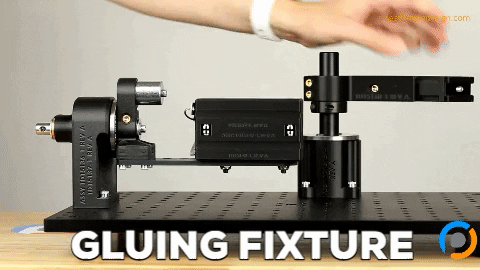
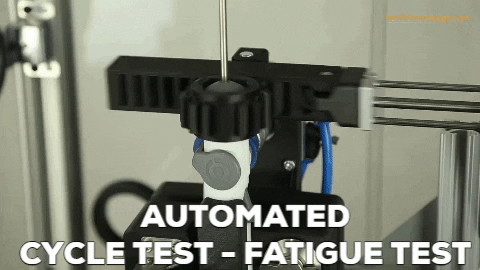
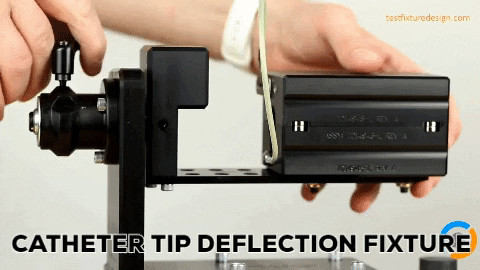
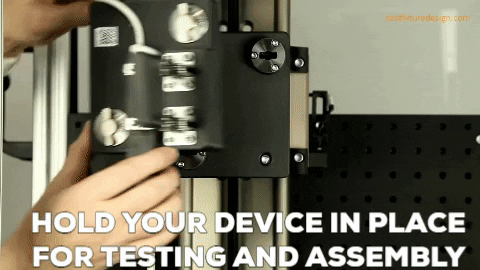
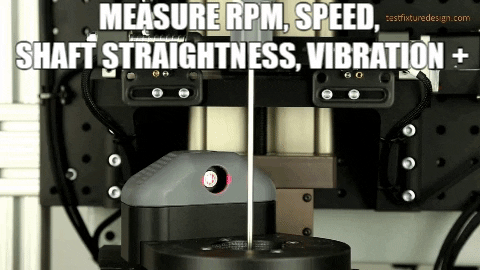
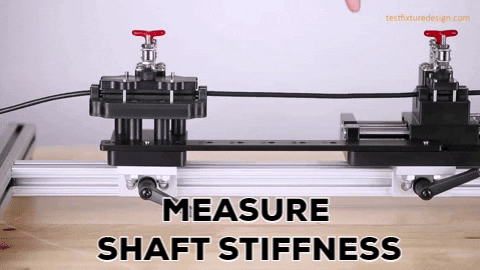






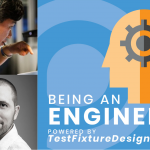
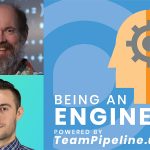
Spot on with this write-up, I seriously think this web site needs a
great deal more attention. I’ll probably be returning to
see more, thanks for the info!
We appreciate your kind words Jacquelyn!